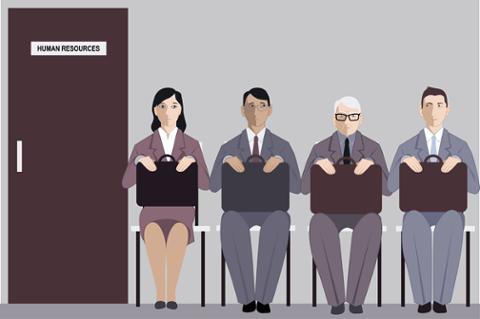New data shows that, as tech pros age, they earn more... but ageism starts to kick in when they're around 40 years old, and there’s a distinct ceiling for earnings.
Calling ageism “a less talked about form of bias within tech,” Hired set out to highlight earnings by age category. As you can see in the chart below, there’s almost always a distinct gap between what tech pros want to earn and what they’re offered.
For the younger crowd, this is a positive: They are often offered more than they expect to earn. It’s not until a tech professional hits their late 30s that their expectations and offers align.
Curiously, this is also the pinnacle of earnings growth. In Hired’s findings, tech pros were never offered more than $149,000 annually. This plateau is reached at around age 40, though expectations continue to rise until tech professionals reach age 50.
This data dovetails with other studies. A 2018 survey from First Round Capital shows us startup founders think ageism in tech starts to kick in around age 36 (roughly the time Hired’s data shows salary expectations and offers start to go opposite directions). And according to the 2018 Dice Diversity and Inclusion Survey, tech pros feel ageism is prevalent in the industry: 29 percent of respondents reported “experiencing or witnessing” age-based discrimination in the workplace, outpacing gender discrimination (21 percent), political-affiliation discrimination (11 percent), and bias based on sexual orientation (six percent).
Our study also showed that, as tech professionals age, fear of ageism worsens:
The survey found those in their late 40s (ages 46 through 49, specifically) were particularly affected. Of this group, a staggering 80 percent say they’re concerned their age (and ageism attitudes) will affect their careers.
A ProPublica report from earlier this year provides insight into why older tech pros may not feel they’re worth as much. It found professionals over 50 were often forced out of their position, and faced longer layoffs. Even if they find new positions, only ten percent will earn as much as they did before losing their initial high-paying job (all of which may contribute to lowered expectations).
Hired’s datapoint is disparate from our own Salary Survey findings on earnings, but that’s not what we’re concerned about with this study. The trend-line showing tech professionals hit a ceiling for earnings is troubling. We’re also concerned older tech pros don’t feel as valued in the workforce, even if Hired’s data shows the offers they receive are better than expected.



